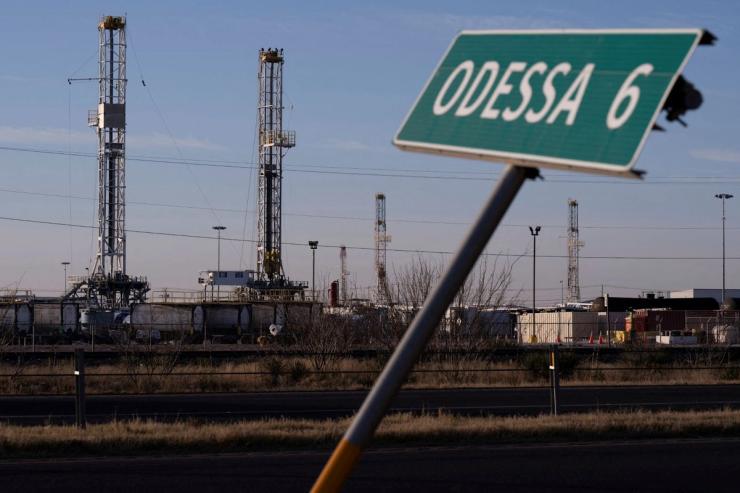Despite covering energy markets for nearly two decades, I’d never been to Houston. Last month, I took the 17-hour flight from Dubai and made my rounds with dozens of investors and drillers in the shale patch. Most volunteered they voted for Donald Trump — and in the same breath expressed disappointment with his policies that are making it harder to boost US oil production.
The contradiction was clear from the start: Trump wants lower oil prices while simultaneously growing domestic output. The administration is easing regulations and cutting red tape, but the industry doesn’t see this as enough to offset price pressure. The US benchmark, West Texas Intermediate, is hovering around $60 a barrel, down around 15% this year. This price is at a level that some producers say could lead to a decline of 150,000 to 200,000 barrels per day (bpd) in US output this year.
For what it’s worth, Kpler, the independent data provider where I work, projects that US oil production is expected to remain flat at 13.4 million bpd. But if prices dip, and remain, at $55 a barrel for the remainder of 2025, we estimate that US output could decline by 800,000 bpd. The administration wants prices even lower.
Chris Wright — the former oilfield services CEO and now energy secretary — has been the public face of Trump’s “drill, baby, drill” campaign, championing regulatory rollbacks to spur production while saying the administration sees $50 oil as favorable. He’s argued that lower prices would force shale operators to innovate and cut costs, just as they did in the 2014–2016 downturn. That argument isn’t landing in Houston.
The frustration among Trump’s core energy supporters was palpable during my visit. It also showed up in a Federal Reserve Bank of Dallas survey of executives from Texas, New Mexico, and Louisiana. The sentiment was consistent: pessimism about declining prices, rising costs, macroeconomic headwinds, and Trump’s unpredictable trade policy.
Some executives told me they are holding out hope that trade tensions will be resolved, reversing the negative outlook for oil demand. There are indications of agreement between the US and China, but the volatility will likely linger until a long-term trade framework emerges.
A similar frustration is whispered in the Gulf, with Trump expecting a boost in US investments while also lowering oil prices, forcing the region’s crude exporters to depress the income they need to comply with his request.
We don’t know yet what will be discussed during Trump’s visit to the Gulf, and if he is sticking to $50 oil. What is clear: His contradiction on oil policy that is souring the outlook for US shale will also make it challenging to achieve his objective of extracting more cash from the Gulf.
Amena Bakr is the Head of Middle East Energy & OPEC+ research at Kpler, an independent global commodities trade intelligence company.

